PLENARY SPEAKERS :
Plenary Talk I
June 20 (Mon) at 08:30-09:30am
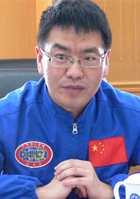 Kaizhou LIU
Kaizhou LIU
Shenyang Institute of Automation (SIA),
Chinese Academy of Sciences, China
(Manned Deep Submergence Hero of China)
“Modeling and Simulation Technologies for Underwater Vehicles”
At present, an increasing number of scientists are fascinated by and are exploring the mysterious ocean. Many underwater vehicles, including AUV, ROV, ARV and HOV, have been developed by countries all over the world, and some of them have demonstrated the capability of submerging beyond more than 7000 meters into the deep sea. The applications of these vehicles are rapidly increasing as they can operate in deeper and riskier areas where divers cannot reach. However, more technical challenges arise as these underwater vehicles explore deeper depth into the ocean.
This lecture will focus on how to apply modeling and simulation technologies to provide reasonable solutions to these daunting engineering challenges. Historically, modeling and simulation technologies for underwater vehicles can be divided into three phases: digital simulation, semi-physical or part hardware in loop simulation, and all physical loads in loop simulation. In this talk, recent research technologies for these techniques will be explored in detail. I will also demonstrate the powerful applications of underwater modeling and simulation technologies using real underwater vehicle experiences as examples.
Biography
Dr. Kaizhou LIU is one of the three oceanauts who manned the Jiaolong Hao (蛟龙号) deep-sea submersible into the ocean depth of more than 7000 meters in 2012, and has since then been recognized as a Manned Deep Submergence Hero of China. The Jiaolong Hao has the greatest depth range of any heavy-duty research vehicle in the world, and the only manned expeditions to have gone deeper were the dives of the Trieste bathyscaphe in 1960 and the dive of the Deepsea Challenger in 2012. Dr. Liu received his Ph.D. degree in Mechatronic Engineering from the University of Chinese Academy of Sciences, China in 2007. He started his academic career at the Shenyang Institute of Automation, Chinese Academy of Sciences, in 2004, and held the positions of Assistant Professor (2004-2006) and Associate Professor (2007-2012); he was promoted to the rank of Professor in 2013. Prof. Liu has published more than 50 journal and conference papers and led more than 10 funded research projects as principal investigator. He was awarded Science and Technology Special Award of the Chinese Shipbuilding Engineering Institute in 2014, Manned Deep Submergence Hero of China in 2013, Liaoning Youth May 4th Medal in 2013, Outstanding Science and Technology Achievement Prize of the Chinese Academy of Sciences in 2013, Jiaxi Lu Young Scientist Award of the Chinese Academy of Sciences in 2012, Top Ten characters of China Automation Society in 2010, and President Award of the Chinese Academy of Sciences in 2007. His current research interests include modeling and simulation, intelligent control, underwater navigation, and virtual reality.
Plenary Talk II
June 21 (Tue) at 08:30-09:30am
George Q. HUANG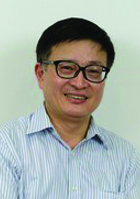
Department of Industrial and Manufacturing Systems Engineering,
The University of Hong Kong, Hong Kong
“Physical Internet for Industrial Parks”
Industrial parks have played major roles in boosting industrial development in both developed and emerging economies. An industrial park usually involves a large number of manufacturing companies, a few supply hubs providing warehousing and transportation services shared among manufacturers, in addition to players providing financial, technical and accounting services. They create special forms of value chain within proximity as compared with typical supply chains. This talk focuses on the development and application of Physical Internet technologies for such industrial park settings. After discussing the special characteristics of industrial park operations, we shall present a physical internet infrastructure framework to deal with the business and technical challenges. Core technology components are discussed together with a new business model of physical internet service system. Case studies are used to highlight the challenges encountered and benefits gained in industrial implementations in the Pearl River Delta (PRD) region which has been called the Factory of the World in south China. New research issues and opportunities are highlighted under the real time visibility and traceability within industrial parks.
Biography
Dr George Q. Huang is Professor and Head of Department in Department of Industrial and Manufacturing Systems Engineering, The University of Hong Kong. He gained his BEng and PhD in Mechanical Engineering from Southeast University (China) and Cardiff University (UK) in 1983 and 1991 respectively. He has conducted research projects in the field of Physical Internet (Internet of Things) for Manufacturing and Logistics Automation and Management with substantial government and industrial grants exceeding HK$50M. He has published extensively including over two hundred refereed articles in journals and around two hundreds conference papers and presentations in addition to ten monographs, edited reference books and conference proceedings. His research works have been widely cited in relevant fields. He serves as associate editors and editorial members for several international journals. He is a Chartered Engineer (CEng), a fellow of ASME, HKIE, IET and CILT, and member of IIE.
Plenary Talk III
June 21 (Tue) at 09:30-10:30am
Hong-Bo SUN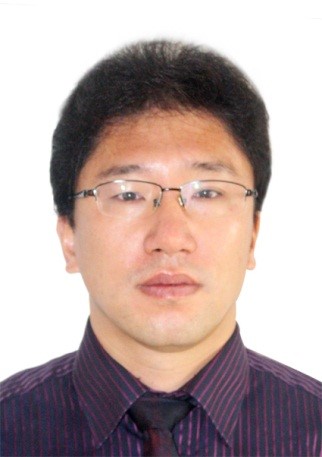
State Key Laboratory on Integrated Optoelectronics,
College of Electronic Science and Engineering,
Jilin University, China
“Manufacturing and Manipulation of Smart Robots using Light”
Smart actuators are devices that can convert various types of energy or environmental signals to mechanical deformation by changing their dimensions. As a key component of a robot, smart actuators based on multi-layer or bi-layer structures have been widely used for actuating, since obvious deformation could be achieved by simply changing the environmental signals such as pH value,temperature, chemicals, and light. In this paper, we would like to summarize our recent advances in the manufacturing and manipulation of smart robots using light. As typical examples, femtosecond laser direct writing offerrofluids for manufacturing of magnetically controlled micro-machines; self-controlled photo reduction for the fabrication of humidity responsive graphene actuators and the light responsive graphene robots have been introduced. The use of light shows a series of advantages for manufacture and manipulation of smart actuators, which holds great promise for the development of modern robots.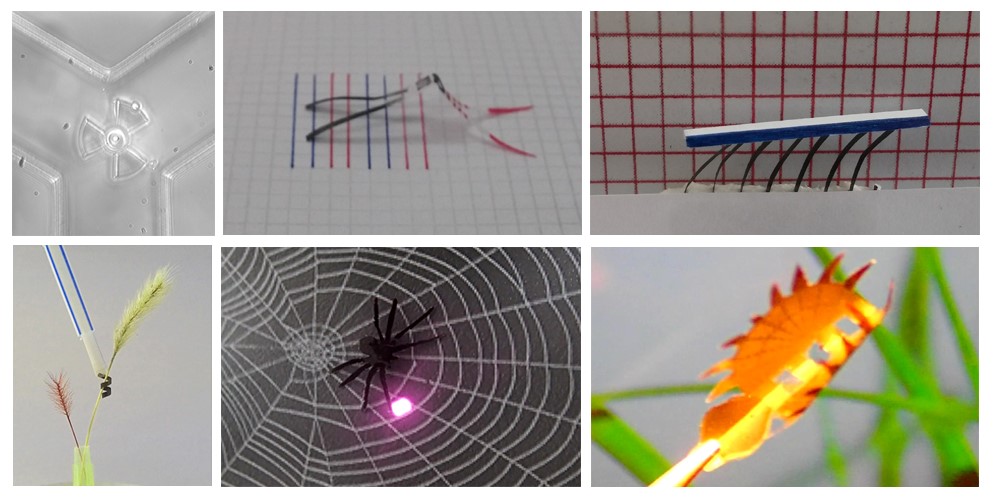
Biography
Hong-Bo Sun received the B.S. and the Ph.D. degrees in electronics from Jilin University, Jilin, China, in 1992 and 1996, respectively. He worked as a postdoctoral researcher in Satellite Venture Business Laboratory, the University of Tokushima, Japan, from 1996 to 2000, and then as an assistant professor in Department of Applied Physics, Osaka University, Osaka, Japan. In 2005, he was promoted as a full professor (Changjiang Scholar) in Jilin University, China. His research interests have been laser nanofabrication and ultrafast spectroscopy: Fabrication of various micro-optical, microelectronical, micromechanical, microoptoelectronic, microfluidic components and integrated systems at nanoscales and exploring ultrafast dynamics of photons, electrons, phonons, and surface plasmons in solar cells, organic light-emitting devices and low-dimensional quantum systems at femtosecond timescale. He became a project leader under PRESTO (Precursory Research for Embryonic Science and Technology, Japan) program in 2001. He was awarded by Optical Science and Technology Society for his contribution to the technology of femtosecond laser initiated nanofabrication in 2002, and won Outstanding Young Scientist Award issued by the minister of MEXT (Ministry of Education, Culture, ports, Science & Technology, Japan) in 2006, and Wang Daheng Optics Award issued by China Optical Society, in 2009. So far, he has published over 100 scientific papers in the above fields, which have been cited for nearly 4000 times according to ISI search report.
Keynote Talk
June 20 (Mon) at 09:30-10:10am
Fuchun SUN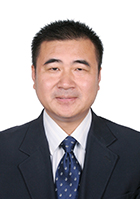
Department of Computer Science and Technology,
Tsinghua University, China
“Cognitive Computation for Robot Dexterous Operations Using Vision and Tactile Sensing”
In this talk, the recent development of the robot dexterous operations with visual, acoustic and tactile sensing is reviewed, and it is emphasized that perception, cognition and computation will be the core power of the robot development in the next ten years or even twenty years. Then, a cognitive dexterous hand equipped with a four-mode intelligent sensing device is introduced, which is a typical CPS developed by our research group and supported by NSFC major instrument project. New sparse coding and dictionary learning with linear dynamical systems for tactile and visual sensing are presented and object recognition approach is also proposed based on modified Bayesian inference using visual and tactual information. Furthermore, experience learning based operation approaches are proposed, where a newly developed glove is used to extract experience. Finally, the experimental results are demonstrated and the future work is discussed
Biography
Dr. Fuchun Sun is professor of Department of Computer Science and Technology and President of Academic Committee of the Department, deputy director of state key lab on intelligent technology & systems, Tsinghua University, Beijing, China. His research interests include intelligent control, robot precise operation and teleportation using visual and tactile sensing.
Dr. Sun is the recipient of the excellent Doctoral Dissertation Prize of China in 2000 by MOE of China and the Choon-Gang Academic Award by Kerea in 2003, and was recognized as a Distinguished Young Scholar in 2006 by the Natural Science Foundation of China. He served as an associated editor of IEEE Trans. on Neural Networks during 2006-2010, IEEE Trans. On Fuzzy Systems since 2011 and IEEE Trans. On Systems, Man and Cybernetics: Systems since 2011.
